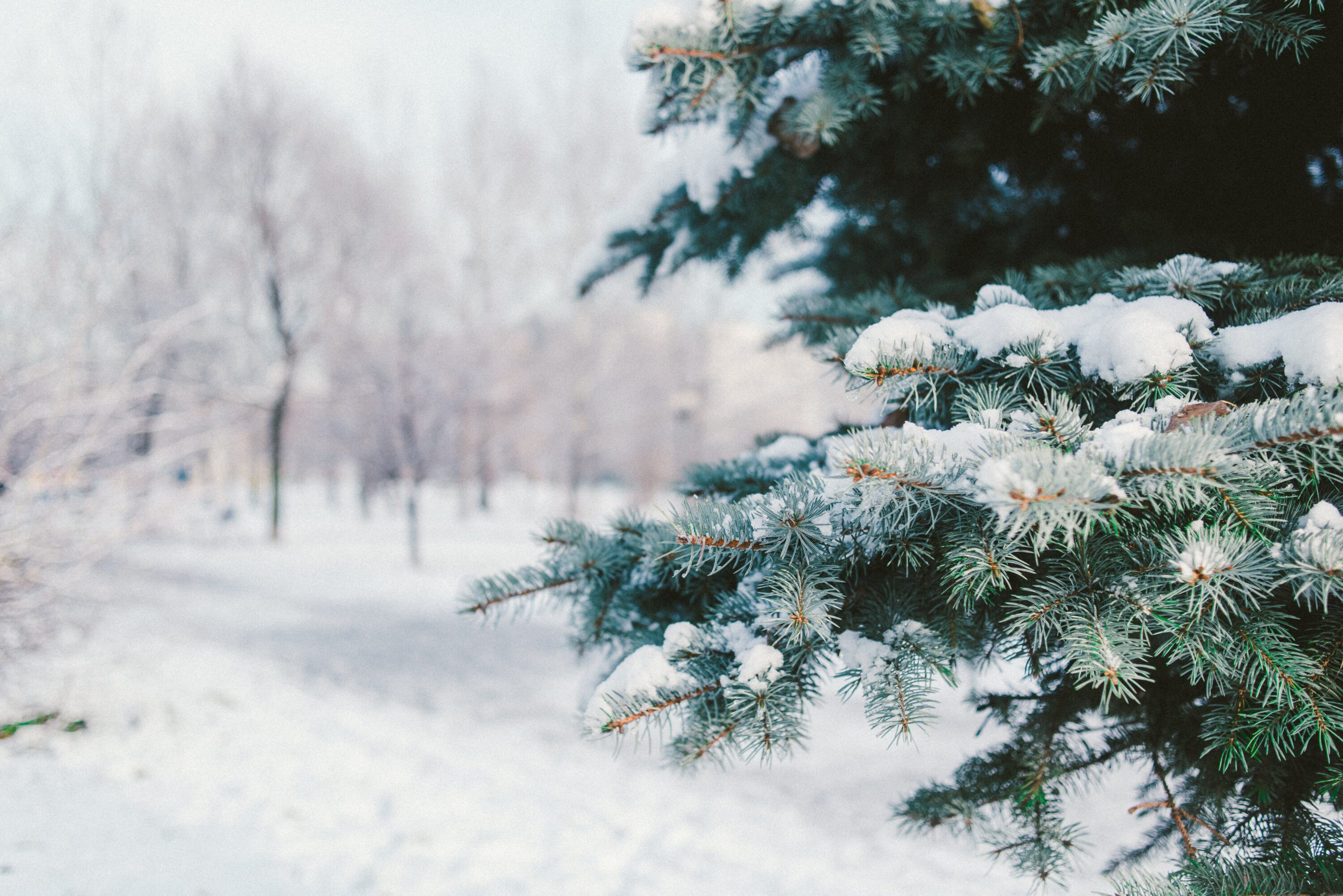Thriving Through Cold: Best Winter Vegetables to Grow

As the chill of winter begins to take hold, many assume that it marks the end of the gardening season. But for savvy retirees with a passion for cultivating their green thumbs, winter can be a season of abundant growth and harvesting. With the right knowledge and a little preparation, you can transform your garden beds into a winter wonderland of fresh produce. In this article, we’ll delve into the best vegetables to grow during the cooler months, optimising your garden for success despite the drop in temperature. Whether you’re an experienced gardener or just starting out in your retirement, you’ll find that these hardy crops can thrive even when the frost sets in, providing you with a bounty of home-grown delights. So, let’s pull on our gardening gloves and explore the wonderful options for keeping your garden alive and flourishing through the cold.
CONTENT
Embracing the Winter Garden
While winter may bring a chill to the air, it doesn’t mean that your gardening pursuits have to come to an end. Embracing the winter garden allows retirees to continue their love of gardening throughout the cooler months, and even reap the benefits of home-grown produce. By selecting the right crops and employing clever strategies, retirees can transform their gardens into thriving winter wonderlands, filled with a diverse array of vegetables that do well in colder climates. So, let’s explore how to harness the potential of the winter garden and discover the joy of growing fresh, healthy produce year-round.
Adopting a proactive mindset when it comes to winter gardening is key. With thoughtful planning and the right choice of vegetables, you can optimise your garden for success. From frost-resistant varieties to cold-hardy greens and root vegetables, there’s no shortage of options for the discerning winter gardener. By embracing the winter garden, retirees can continue to revel in the joy of tending to their gardens and enjoy the satisfaction of nurturing these resilient crops through the colder months.
For retirees, the winter garden becomes not only a source of fresh produce, but also a source of pleasure and purpose. Whether you’re a seasoned gardener or new to the world of horticulture, embracing the winter garden presents an exciting opportunity to nurture life from the earth, offering a sense of connection to nature that is both fulfilling and invigorating. With the right guidance and a mindset of curiosity and exploration, the winter garden can become a cherished part of your retirement lifestyle.

Cultivating Your Winter Garden Strategy
Cultivating a successful winter garden requires a thoughtful strategy tailored to the unique demands of the cooler months. As retirees, it’s important to approach winter gardening with a sense of enthusiasm and adaptability. Before the ground even begins to frost over, retirees should start by identifying the right location in their garden for the winter crops. Sun exposure is crucial during winter, so selecting a spot that maximises sunlight throughout the day is essential. This strategic approach sets the stage for a thriving winter garden that can withstand the colder temperatures and produce an abundant harvest.
Timing is another critical factor in your winter garden strategy. Retirees should research the best times to plant their winter vegetables, taking into account the average first frost date in their area. By sowing seeds or transplanting seedlings at the optimal times, gardeners can ensure that the plants have enough time to mature before the full force of winter sets in. This strategic timing allows for a successful crop yield and a flourishing winter garden.
As part of your winter garden strategy, it’s important to prepare the soil properly to optimise the growing conditions for your vegetables. Retirees can enhance the soil’s fertility by adding organic matter, such as compost, to provide essential nutrients and improve the soil structure. By cultivating a strategic plan that includes location selection, timing, and soil preparation, retirees can set the stage for a bountiful winter garden that brings joy and sustenance throughout the colder months.
Selecting the Right Vegetables for Cooler Climates
Selecting the right vegetables for cooler climates is a crucial decision for retirees looking to cultivate a thriving winter garden. When choosing vegetables for colder conditions, it’s essential to focus on hardy crops that can withstand the lower temperatures and, in some cases, even benefit from them. Root vegetables such as carrots, turnips, and radishes are excellent choices for winter gardening, as they can develop sweeter flavors in cooler weather. Leafy greens like kale, spinach, and Swiss chard are also well-suited to cooler temperatures and can provide a continuous harvest throughout the winter months.
As retirees consider the selection of winter vegetables, it’s important to explore frost-resistant varieties that can withstand chilly conditions. For example, certain types of lettuce, such as ‘Winter Density’ and ‘Arctic King,’ are renowned for their ability to thrive in colder climates. Similarly, winter varieties of broccoli and cauliflower, such as ‘Purple Sprouting’ broccoli and ‘Snow Crown’ cauliflower, are excellent choices for retirees looking to diversify their winter garden with delicious and nutritious produce.
In addition to leafy greens and root vegetables, retirees can also consider planting herbs such as parsley, chives, and thyme, which can add flavor and vibrancy to winter dishes. By selecting a combination of frost-resistant vegetables and cool-weather-loving crops, retirees can curate a diverse and resilient winter garden that is brimming with fresh, home-grown goodness.

Preparing the Soil for Winter Crops
Preparing the soil for winter crops is a vital step in ensuring the success and productivity of your winter garden. Retirees should start by clearing the garden beds of any debris and weeds to create a clean and fertile environment for the upcoming crops. After clearing the beds, it’s important to replenish the soil’s nutrients by incorporating organic matter such as compost or well-rotted manure. This enriches the soil and provides essential nutrients to support the growth of the winter crops.
In addition to adding organic matter, retirees should take the time to assess the soil’s pH levels to ensure an optimal growing environment for their winter crops. Vegetables generally prefer a slightly acidic to neutral pH range, so testing the soil’s pH and making any necessary adjustments can promote healthier plant growth and stronger yields. By optimising the soil’s pH, retirees can create a hospitable environment that fosters the development of robust and nutritious winter crops.
To further prepare the soil for winter crops, retirees can consider employing mulching techniques. A layer of organic mulch helps to insulate the soil and regulate its temperature, protecting the roots of the winter plants from the potential harshness of the winter climate. Mulch also helps to retain moisture, reducing the plants’ water needs and promoting overall resilience. By carefully preparing the soil through clearing, enriching, and mulching, retirees can lay the foundation for a flourishing winter garden that yields an abundance of wholesome and flavorful produce.
Understanding Frost-Resistant Varieties
Understanding the concept of frost-resistant varieties is a key consideration for retirees venturing into winter gardening. When selecting winter crops, retirees should prioritize vegetables that have a natural resistance to frost, as these varieties can better withstand the cold temperatures, preserving the quality and yield of the harvest. Frost-resistant varieties exhibit a remarkable ability to endure lower temperatures, making them ideal candidates for winter gardening. By choosing these resilient crops, retirees can enhance the success of their winter garden and enjoy a diverse array of fresh produce even in the coldest months.
Broccoli, cauliflower, and specific types of lettuce are prime examples of frost-resistant vegetables that retirees can incorporate into their winter gardens. These hardy varieties are primed to thrive in colder conditions, demonstrating resilience against frost and cold snaps. Incorporating frost-resistant vegetables not only ensures a more robust garden but also diversifies the selection of crops, allowing retirees to enjoy a broader range of home-grown produce during the winter season.
Understanding the unique characteristics of frost-resistant varieties empowers retirees to make informed choices when planning their winter garden. By leveraging the inherent hardiness of these vegetables, retirees can create a resilient garden that brims with vitality even during the cooler months. This knowledge equips retirees with the insight needed to curate a rich assortment of frost-resistant crops, promoting a successful and rewarding winter gardening experience.

Timing Matters: When to Plant Winter Vegetables
The timing of when to plant winter vegetables plays a pivotal role in the success of a retiree’s winter garden. To kick-start the process, retirees should acquaint themselves with the average date of the first frost in their region. Armed with this knowledge, they can then work backward to determine when to plant their winter crops. By sowing seeds or transplanting seedlings at the right time, retirees can provide their vegetables with ample opportunity to mature and thrive before the onset of winter’s icy grip. This strategic approach sets the stage for a resilient and productive winter garden.
In addition to understanding the first frost date, retirees must consider the specific planting times for different winter vegetables. Some crops, like carrots and kale, fare well when sown directly into the ground in late summer or early autumn. Others, such as cabbage and broccoli, are best kick-started indoors before being transplanted into the garden beds once they have developed sturdy seedlings. By adhering to these specific planting guidelines, retirees can harness the power of timing and ensure that their winter garden is bestowed with the best possible opportunities for growth and yield.
Furthermore, retirees can take advantage of successional planting, a strategic technique that involves staggering the planting of crops to ensure a continuous harvest. This method allows for a steady supply of fresh produce throughout the winter months, rather than an overwhelming surplus at a single time. With thoughtful planning and attention to the optimal planting times for different winter vegetables, retirees can master the art of timing to create a flourishing winter garden that sustains and delights throughout the cold season.
Maximising Sun Exposure in Winter Months
Maximising sun exposure in the winter months is crucial for the success of a retiree’s winter garden. As the sun takes on a lower trajectory in the sky during the colder season, it’s essential to carefully select the right location in the garden to maximise sun exposure. Retirees should identify a spot that receives the most sunlight throughout the day, ensuring that their winter crops receive the required amount of sunlight to thrive and produce a bountiful harvest. By optimising sun exposure, retirees can provide their vegetables with the energy they need to flourish, even in the midst of winter’s chill.
In addition to strategic location selection, retirees can also consider using garden cloches or row covers to maximise sun exposure and protect their winter crops from the elements. Garden cloches are transparent, bell-shaped coverings that serve to shield plants from cold winds and retain heat, effectively creating a microclimate that promotes better growth and protects against frost. Similarly, row covers can be employed to provide a layer of insulation, safeguarding the plants while allowing ample sunlight to permeate through. By utilising these protective measures, retirees can optimise sun exposure and create a hospitable environment for their winter vegetables.
Furthermore, retirees can choose to grow winter vegetables in containers or raised garden beds, which can be strategically positioned to receive the maximum amount of sunlight. This approach provides the flexibility to rearrange the garden setting as needed to capture the sun’s rays more effectively. By leveraging these sun-magnifying tactics, retirees can harness the power of sunlight to nurture a vibrant and resilient winter garden that defies the season’s chill and yields a delightful array of fresh, home-grown produce.

Watering Wisdom for Winter Gardening
Proper watering is essential for the success of a winter garden, and retirees should exercise strategic wisdom when it comes to watering their winter crops. While the water requirements of plants may be lower during the winter, it’s important to ensure that the soil remains adequately moist, especially during dry spells. When watering, retirees should aim to provide a deep, thorough soaking for their winter vegetables, allowing the water to penetrate the soil and reach the plants’ root systems. It’s advisable to water the garden in the morning so that any excess moisture can evaporate during the day, reducing the risk of fungal diseases that can thrive in damp conditions.
Additionally, retirees should take into account the impact of rain and melting snow on the moisture levels of their winter garden. While natural precipitation can contribute to the watering needs of the garden, it’s important to monitor moisture levels and adjust watering practices accordingly. In periods of prolonged dryness, retirees should be prepared to supplement natural water sources to ensure that their winter crops receive the hydration they require for healthy growth. Maintaining a careful balance of moisture in the soil is vital for the overall health and resilience of the winter garden, and retirees should exercise vigilance in monitoring and managing the watering process.
Furthermore, retirees can utilise mulching to help regulate soil moisture and reduce water evaporation. A layer of organic mulch acts as a protective barrier, shielding the soil from the elements and preserving moisture levels. This can be particularly beneficial during the winter months, when the drying effects of cold winds and fluctuating temperatures can impact soil moisture. By adopting watering practices that are mindful of seasonal conditions and incorporating mulching techniques, retirees can nurture their winter garden with the balanced water supply it needs to thrive and yield an abundant, healthy harvest.
Protecting Your Plants from the Elements
Protecting plants from the elements is a crucial aspect of winter gardening, especially for retirees looking to maintain a thriving garden throughout the colder months. Given the potential for frost, cold winds, and fluctuating temperatures, it’s important for retirees to employ strategic measures to shield their winter crops from adverse conditions. One effective method of protection is to use garden fabric covers or frost blankets, which provide insulation and guard against freezing temperatures. By carefully draping these covers over the plants, retirees can create a protective barrier that helps to retain heat and shield the crops from frost damage.
Furthermore, retirees can construct simple structures such as cold frames or mini hoop houses to shelter their winter crops from the elements. These structures provide a controlled environment that shields the plants from harsh winds and freezing temperatures, creating a microclimate that fosters healthier growth. Retirees can customise these protective structures to suit the specific needs of their garden, ensuring that their winter crops receive the shelter they need to thrive and produce a bountiful harvest.
In addition to protecting plants from the cold, retirees should be mindful of moisture levels in the soil and guard against waterlogged conditions. Soggy soil can be detrimental to the health of winter crops, potentially leading to rot and disease. By ensuring proper drainage and employing mulching techniques, retirees can prevent waterlogging and promote a healthier growing environment. By implementing these protective measures, retirees can fortify their winter garden against the elements, safeguarding their crops and maximising the potential for a successful and abundant harvest.

Harvesting Your Winter Bounty
As the winter rolls on and the season progresses, it’s time for retirees to reap the rewards of their diligent winter gardening efforts by harvesting a bountiful supply of fresh, home-grown produce. Winter vegetables are resilient and hardy, and many of them reach their peak sweetness and flavor during the colder months. Retirees can look forward to harvesting a diverse array of crops, including root vegetables like carrots and turnips, hearty leafy greens such as kale and spinach, and an assortment of frost-resistant herbs. By carefully timing the harvest, retirees can enjoy a steady supply of nutritious and delicious produce, elevating their culinary experiences during the winter season.
In addition to harvesting, retirees should also be mindful of preserving their winter bounty. Many winter vegetables can be stored for extended periods, ensuring a continued supply of home-grown produce well beyond the harvest. Root vegetables like potatoes and carrots can be stored in a cool, dark place, while leafy greens and herbs can be dried or frozen to retain their freshness and flavor. By adopting proper storage techniques, retirees can extend the longevity of their harvest and continue to enjoy the fruits of their labor throughout the winter and into the early spring.
Further enhancing the experience, retirees can explore a variety of winter recipes that highlight the flavors and textures of their freshly harvested produce. Hearty soups and stews, colorful salads, and savory roasts are just some of the culinary delights that can be prepared using winter vegetables. By incorporating these seasonal ingredients into their cooking, retirees can savor the satisfaction of enjoying meals made from their own winter bounty, adding a touch of pride and joy to their dining experiences during the colder months.
Storing Your Winter Crops Effectively
Storing your winter crops effectively is paramount to ensuring that you can enjoy your home-grown produce well beyond the harvest. Root vegetables such as potatoes, carrots, and beets should be stored in a cool, dark place with ample ventilation to prevent spoilage. A root cellar or a cool pantry serves as an ideal storage location, allowing you to prolong the freshness of your root vegetables and enjoy them throughout the winter. It’s important to inspect the stored crops regularly, removing any damaged or spoiled produce to prevent the spread of decay.
Leafy greens like kale and spinach can be preserved and enjoyed over an extended period by employing various storage methods. Freezing freshly harvested greens is a common technique that helps to retain their nutritional value and flavor. After blanching, the greens can be placed in airtight containers or freezer bags and stored in the freezer. Another option is to dry the greens by laying them out in a well-ventilated area until they are fully dehydrated. Once dried, they can be sealed in airtight containers and stored in a cool, dry place, ready to be used in soups, stews, and other culinary creations.
For herbs such as parsley, thyme, and chives, effective storage is essential for preserving their flavors and aromas. Herbs can be dried by hanging them in small bunches in a well-ventilated area with low humidity. Once completely dry, the leaves can be removed from the stems and stored in airtight containers. Another way to extend the use of fresh herbs is to freeze them in ice cube trays with water, oil, or broth, allowing you to easily incorporate them into your cooking. By adopting these effective storage practices, retirees can extend the longevity of their winter harvest and continue to relish the flavors and nutrition of their home-grown crops throughout the colder months.

Enjoying the Fruits of Your Labour: Winter Recipes
After dedicating time and effort to cultivate a thriving winter garden, retirees can savor the fruits of their labor by preparing a delightful array of winter recipes using their freshly harvested produce. Hearty root vegetables like potatoes and carrots can be transformed into comforting dishes such as roasted root vegetable medleys, creamy soups, and savory casseroles. Retirees can also experiment with inventive recipes, such as mashed parsnips and carrot fritters, to elevate the dining experience and relish the unique flavors of the winter harvest. These warming and wholesome dishes provide a nourishing and satisfying culinary experience, allowing retirees to indulge in the rich and vibrant flavors of their home-grown winter bounty.
Incorporating leafy greens and herbs from the winter garden into recipes adds a burst of freshness and vitality to winter meals. Nutrient-packed kale and spinach can be used to create vibrant salads, flavorful stir-fries, and nourishing smoothies, infusing a dose of green goodness into the winter diet. Fresh herbs like parsley, chives, and thyme are perfect for enhancing the flavors of wintertime dishes, adding aromatic elements to soups, roasted vegetables, and savory meat dishes. By harnessing the flavors and nutritional benefits of their home-grown greens and herbs, retirees can bring a touch of vibrancy and vitality to their winter culinary creations.
Beyond savory dishes, winter produce can be used to concoct delectable sweet treats that embody the essence of the season. Root vegetables like sweet potatoes and beets can be transformed into luscious desserts, such as hearty sweet potato pies and chocolate beet cakes, providing a delightful and nutritious twist to traditional winter sweets. By exploring a range of sweet and savory recipes, retirees can indulge in the joys of cooking with their home-grown winter crops, adding a touch of creativity and fulfillment to their winter culinary adventures.
Conclusion
As the winter garden comes to life and the bounty of fresh, home-grown produce graces the table, retirees are rewarded with the joy and fulfillment that comes from nurturing life from the earth. The resilience of winter vegetables, the mindful strategies employed, and the delicious recipes created from the harvest all contribute to a rewarding experience that celebrates the abundance of the winter garden. Through careful planning, strategic cultivation, and the utilization of the seasonal produce, retirees have the opportunity to revel in the delights of winter gardening, forging a deeper connection with the natural world and the rewards it provides. Embracing the art of winter gardening is a testament to the enduring spirit and resourcefulness of retirees, as they continue to find fulfillment and enrichment in their retirement years.






